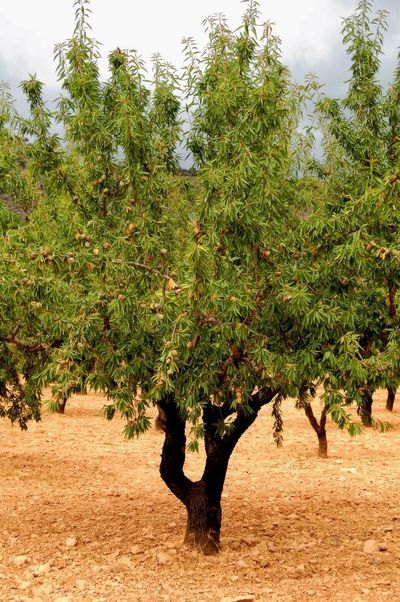Can You Transplant an Almond?
Almond trees are related to plums and peaches, and, in fact, the growth habit of an almond is similar to that of a peach. Almonds thrive in areas of hot summers and cool winters. Trees are usually sold when they are one to three years of age for the simple reason that they are easier to handle at that size, but sometimes transplanting a more mature almond might be in order.
Almond Transplanting Tips
Generally, transplanting mature trees isn’t recommended. This is because the larger the tree, the greater proportion of root system will be lost or damaged when dug from the ground. An imbalance between the roots and the aerial portions of the tree may mean that the leafy areas of the tree may be clamoring for water that a disturbed root area can’t handle. The tree then suffers drought stress that may even result in death. If you absolutely do have to transplant a mature almond, there are some almond transplant tips that can help alleviate any potential problems down the road. First off, never try moving an almond tree during its growing season. Only move it in the early spring when the tree is still dormant, but the ground is workable. Even so, don’t expect a transplanted almond to grow or set fruit in the year following transplanting.
How to Transplant Almond Trees
To foster a healthy balance between root and shoots, prune all of the main branches back about 20% of their length. Soak the ground around the almond deeply for a day or so prior to transplanting to make the root mass easier to dig up. Break up the soil and dig a planting hole for the tree that is at least two times wider that its root ball diameter and at least as deep. Choose a site with full sun, and moist but well-draining soil. If the soil lacks nutrients, amend it with an organic rotted compost or aged manure so that the amendment makes up no more than 50% of the prepared soil. With a sharp spade or shovel, dig a circle around the tree. Sever or cut large roots with a lopper. Once the roots are severed, dig a larger space around and under the root ball until it is accessible, and you are able to lever the root ball out of the hole. If you need to move the almond some distance to its new home, secure the root ball with burlap and twine. Ideally, this is a very temporary measure, and you will plant the tree immediately. Set the root ball in the prepared planting hole at the same level it was in its prior location. If need be, add or remove soil. Back fill the planting hole, firming the soil around the root ball to prevent air pockets. Water the soil deeply. If the soil settles, add more soil to the hole and water again. Lay a 3 inch (8 cm.) layer of mulch around the tree, leaving a few inches (8 cm.) between the trunk and the placement of the mulch to conserve water, retard weeds, and regulate soil temps. Continue to water the tree consistently. Lastly, transplanted trees may be unstable and should be staked or supported to give the roots a chance to establish themselves firmly which can take more than a year.
